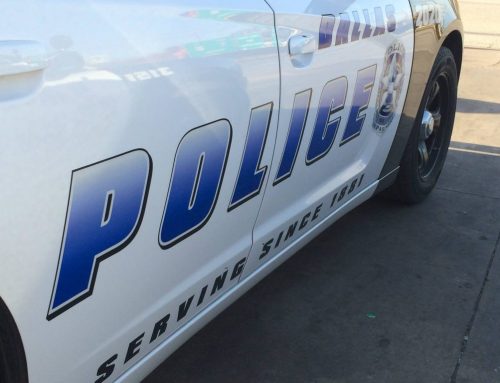At an undisclosed parking lot in East Dallas, a feral cat colony is built against the back fence. It looks like a miniature tent city, with mismatched structures running end to end, covered in deteriorating tarps. An igloo doghouse sits next to a wooden structure with shingles, and straw lines the ground to provide insulation and absorb moisture.
Dotted around the parking lot, creeping behind fences or even lounging out in the open are a few of the more than 10 cats who make up the colony. Grey and orange tabbies and a couple that don’t fit in any category know the food is coming. While they aren’t scared of humans, they don’t have any desire to cuddle up either.
Juliet seems to love the camera, though her breed can’t be placed. Morris is an orange tabby that has never been caught. He is wily and tough, exactly what you would expect in a street cat.
The City of Dallas estimates that there are 350,000 homeless, wild or untamed cats in our city. Each morning, a network of volunteers fans out across East Dallas to feed and water feline friends, who are often dumped or abandoned in locations all around town. If they find a new cat, they will attempt to trap it and have it fixed before releasing or finding a home for it. Volunteers can register with the city to be cat colony managers, who are in charge if a cat gets sick or needs to go to the vet.
These volunteers are part of a network of feline caregivers in Dallas, one of whom is Leigh Sessler, the Dallas Cat Lady. Since 2006, the Casa View neighbor has been organizing volunteers around Dallas to trap, fix, find foster homes and adopt out cats that will do well in a forever home. After volunteering and working for another cat rescue group, Dallas Cat Lady became an official nonprofit in 2010.
Everyone involved is a volunteer (including Sessler, who has a full time job), but she helps get neighbors organized to do the tough and often thankless work ahead of them.
According to Sessler, a feral cat is one who has been left behind and has learned to live off the land while losing its socialization to humans. “It is more like having raccoons, possums or squirrels,” she says. Despite the lack of socialization, her volunteers do their best to trap the feral cats so they can be fixed, reducing future generations of strays.
Last year, her volunteers fixed close to 1,200 cats. Sessler has eight cats herself, though she tends to take on the special needs kitties that might not get picked up for adoption.
Sessler is well known in the cat rescue scene. She once received a call about a cat and found out that the 311 operator had been giving out her number for cat queries. “Everybody has my phone number,” she says. “We just work with as many as we are able to.”





